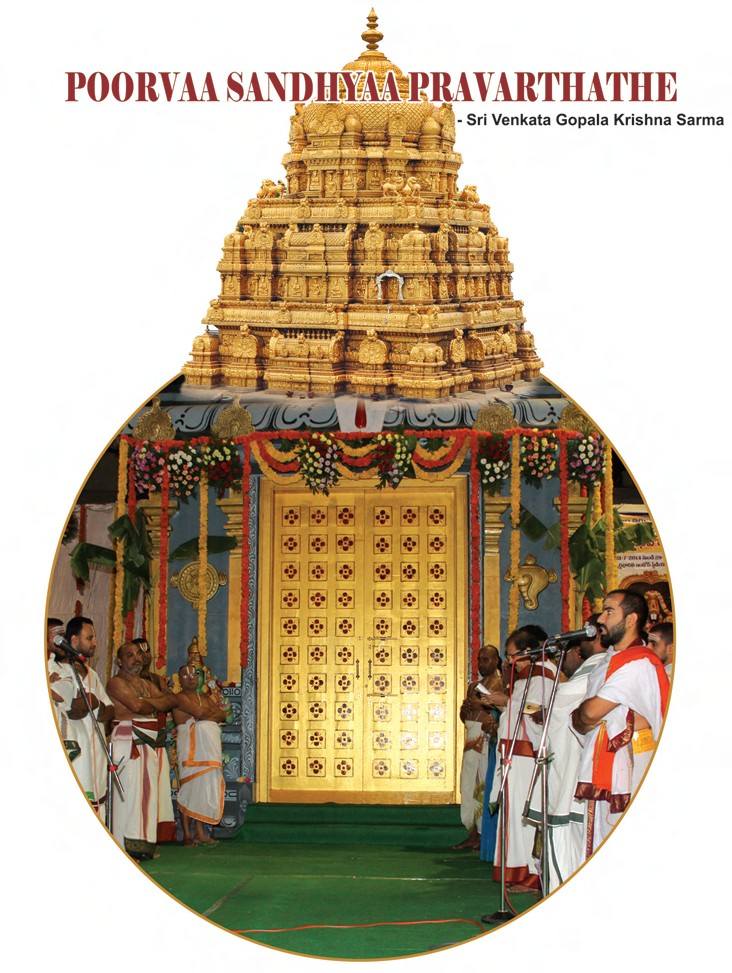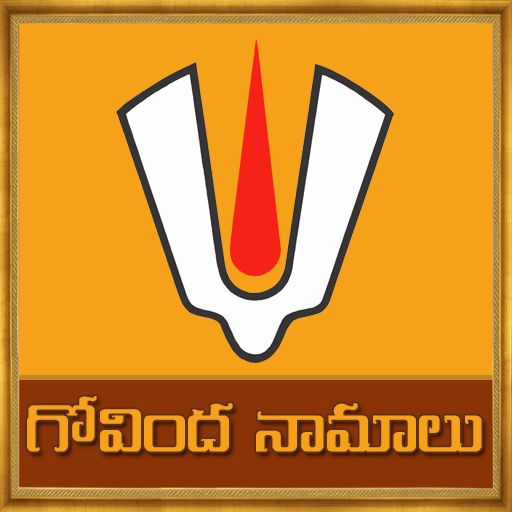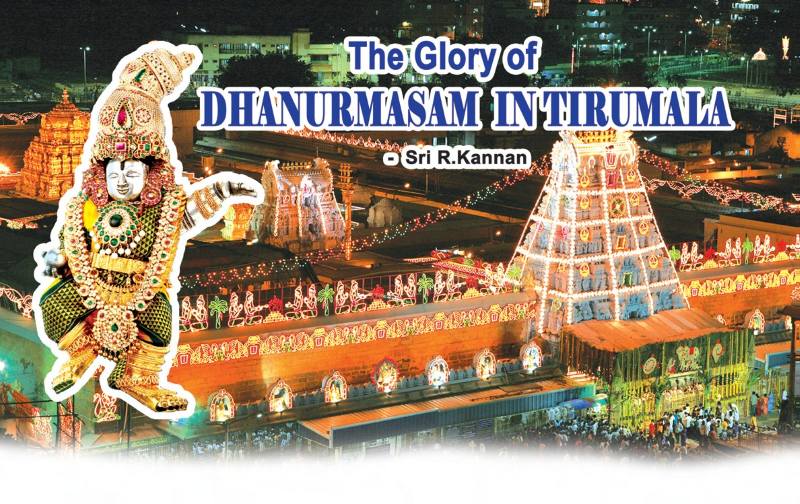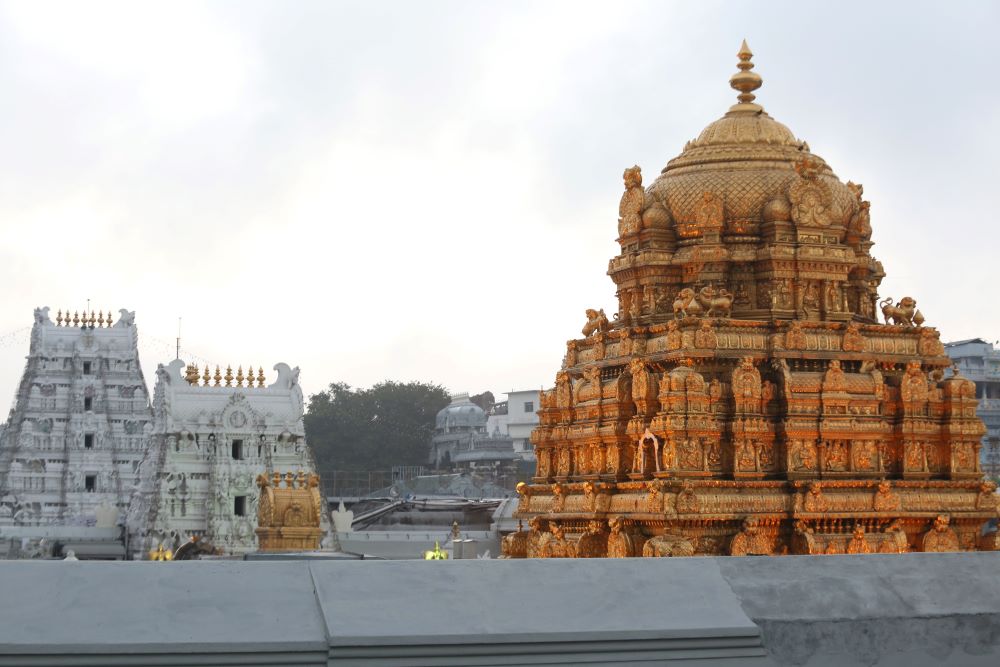Snapana Beram / Sri Ugra Srinivasa Moorthy Sri Ugra Srinivasa Moorthy (Ugra – ferocious) with His two Consorts Sri Devi and Bhoo Devi, as per temple tradition, is also known as Venkatattu Raivar, Snapana Beram, Snapana Moorthy and Achyuta Beram. To Snapana Beram (Bath Image) daily Abhishekams are not offered. These idols – Srinivasa Moorthy, Sri Read More
Category: Tirumala Temple
Tirumala Temple is full of wonders and miracles at every step. Wherever you see, you will find such wonders either in the past or future
Significance of Sri Venkateswara Suprabhatham
Sri Venkateswara Suprabhatham The sonorous verses of ‘Sri Venkateswara Suprabhatham‘ ring in our ears, reminding us of the Lord and his glory, and of the wonderful state of nature at the time of dawn when all beings seem to revere the all-pervading Lord. The verse of this wonderful Suprabhatam is from Srimad Ramayanam of Adi Read More
108 Govinda Namalu for Prosperity: Chanting the Divine Names of Vishnu
Recite Govinda Namalu for Maximum Benefits Govinda Namalu in English below is exactly as they are recited in the Tirumala Tirupathi Devasthanam (TTD) and Sri Venkateswara Bhakti Channel (SVBC). Govinda Namalu or Govinda Namvali are the different names of Lord Venkateswara of Tirumala. Govinda Namalu in English Lyrics are mentioned below, chant with devotion for Read More
Glory of Dhanurmasam in Tirumala
Dhanurmasam in Tirumala In Tirumala, every year in the month of Dhanurmasam, it is Sri Krishna and not Bhoga Srinivasa Murthy who listens to the lullaby sung by the descendant of Annamaiah. During this one month Suprabhatam will not be rendered. Instead of Suprabhatam, Andal’s Tiruppavai is rendered. Sri Krishna will be given a bath Read More
Sri Ugra Srinivasa Moorthy
Sri Ugra Srinivasa Moorthy / Snapana Beram Sri Ugra Srinivasa Moorthy (Ugra – ferocious) with His two Consorts Sri Devi and Bhoo Devi, as per temple tradition, is also known as Venkatattu Raivar, Snapana Beram, Snapana Moorthy and Achyuta Beram. To Snapana Beram (Bath Image) daily Abhishekams are not offered. These idols – Srinivasa Moorthy, Read More
Weekly Sevas – Vaarotsavas – Tirupati Balaji Temple
Vaarotsavas – Weekly Services / Weekly Sevas A few services are rendered to Lord Sri Venkateshwara as Vaarotsavas once a week without fail. Every day is a festival day in Tirumala. On each specific day, the Lord of Lords blesses His devotees in a specific ritual during the weekdays. These rituals are categorized as weekly Read More
Vakula Devi: The Divine Mother of Lord Venkateswara
Vakula Devi / Vakula Matha We have been mentioning the name of Vakula Devi in connection with the Swamy Vari kitchen. We have also read that she supervises the dishes prepared in the kitchen. Let us try to know more about Vakula Devi. In the northeast direction of the kitchen, there is a small temple. Read More
Anandanilayam
Anandanilayam – Tirupati Balaji Temple The term “Anandanilayam” means the source of spiritual pleasure. One can feel no thought about his home when the Vimanam from outside and the God within the shrines are seen. It is ‘Ananda’ indeed of a superior type. This Ananda Nilaya Vimana is referred to at the end of King Read More
Sri Agnya Palaka Anjaneya Swami (Ramarmeda)
SRI ANJANEYA SWAMI – The Foremost Devotee of Lord Srinivasa at Tirumala Sri Anjaneya Swami who is blessed by Lord Sri Rama in the previous Yuga for His devout services is now receiving worship from His devotees in Tirumala, the Kaliyuga Vaikunta. He gives His grand darshan in various postures in different places in Tirumala. Sri Read More
Traditional Dress Code – Tirumala
Dress Code – Tirumala According to the Scriptures, dharma protects those, who safeguard it. If the tree in our garden has to give fruits and shade, we have to nourish it with water and manure. Similarly, dharma flourishes only when we protect it properly. The Hindu dharma is as ancient as time itself. Hinduism prescribes Read More




